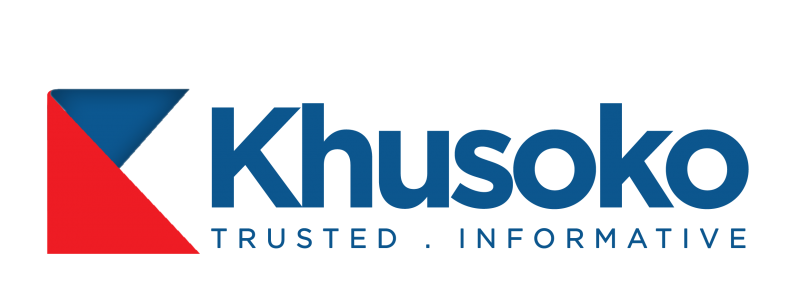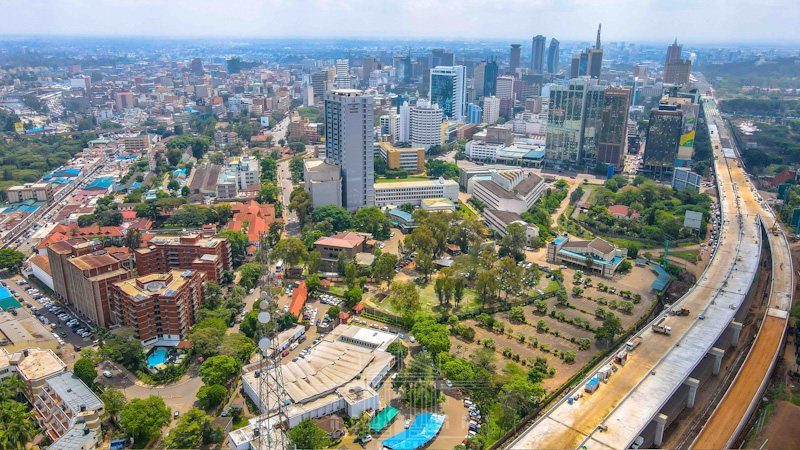The Kenya Association of Manufacturers (KAM), in collaboration with Danish Industries East Africa, has launched the Route to Market (RTM) Strategy 2025–2027, a blueprint to position Kenya as a globally competitive exporter of high-quality goods through digital empowerment and sustainable industrialisation.
Unveiled in Nairobi, the RTM Strategy aligns with national priorities, including the Bottom-Up Economic Transformation Agenda (BETA) and the Fourth Medium-Term Plan (MTP-IV). It addresses evolving global trade dynamics, equipping exporters with a digital-first toolkit for compliance, market access, and sustainable scaling.
The strategy prioritises market access and resilience over export volume, redefining how Kenyan products compete globally.
KAM Chief Executive Tobias Alando stated, “Trade hinges on efficient movement, precise measurement, robust certification, and seamless connectivity. This strategy empowers Kenya to proactively shape global markets.”

Alando emphasised the strategy’s relevance amid challenges like AGOA uncertainties, global logistics constraints, and stringent climate regulations, adding, “Proactivity is critical. Digitally equipped exporters, backed by a responsive state and real-time intelligence, can compete globally.”
Susan Mang’eni, Principal Secretary, State Department of MSMEs Development, highlighted government support for MSME growth through initiatives like the Draft MSME Policy, which promotes value chain integration and cluster development.
The RTM strategy leverages the African Continental Free Trade Area (AfCFTA) to enhance intra-African trade.
Dr. Juma Mukhwana, Principal Secretary, State Department for Industry, noted, “Africa, with 17% of the world’s population, contributes only 3% of global manufactured goods, and intra-African trade is just 15%. This strategy addresses non-tariff barriers to boost continental trade.”
As global trade evolves, the RTM Strategy 2025–2027 provides a forward-looking framework, establishing Kenya as a hub for high-value manufacturing and sustainable exports.
Over the next three years, collaboration, innovation, and measurable progress will drive success, supported by strong partnerships and national commitment.
The RTM strategy is built on five interconnected pillars, unified by a robust digitisation agenda:
- Market Diversification and Trade Agreement Utilisation: Expanding export markets by leveraging AfCFTA, EU-EPA, AGOA, and COMESA.
- Digital Preparedness and Trade Intelligence: Launching a centralised digital platform to deliver real-time data, market insights, and exporter readiness tools.
- Compliance, Sustainability, and Standards: Strengthening adherence to international standards ( ISO, HACCP) and enhancing transparency and traceability for eco-conscious markets.
- Financial Resilience and Risk Mitigation: Improving trade finance access, de-risking cross-border transactions, and supporting exporters against global disruptions.
- Enhancing Exports through Clusters and Value Addition: Promoting value addition and exporter clusters, leveraging Special Economic Zones (SEZs) to boost capacity.
By 2027, the RTM strategy aims to achieve:
- Economic Diversification: Double-processed exports by transitioning enterprises and cooperatives to digital value chains.
- Job Creation: Empower youth and women through digital literacy and tech-driven roles in SEZs and County Aggregation and Industrial Parks (CAIPS).
- Sustainability Leadership: Position Kenya as Africa’s leading exporter of sustainable goods.
Impact of the African Continental Free Trade Area (AfCFTA)
The African Continental Free Trade Area (AfCFTA), launched in January 2021, creates a single market for goods and services across 54 African countries, encompassing 1.3 billion people and a combined GDP of $3.4 trillion.
Its impact, particularly for Kenya’s RTM Strategy 2025–2027, is progressive, driving economic growth, trade, and strategic positioning.
1. Boosting Intra-African Trade
- Context: Intra-African trade is only 15% of total trade, compared to 60–70% in Europe or Asia. Africa accounts for just 3% of global manufactured goods despite 17% of the world’s population.
- AfCFTA Impact: By reducing tariffs on 90% of goods and tackling non-tariff barriers (customs delays, regulatory disparities), AfCFTA is projected to increase intra-African trade by 52% by 2030 (UNCTAD). For Kenya, this unlocks a vast continental market, enabling exporters to diversify beyond traditional markets (EU, US) and target high-growth economies like Nigeria, Ethiopia, and South Africa.
- Kenya’s Advantage: As a regional manufacturing and logistics hub, Kenya can leverage AfCFTA to export high-value goods (processed foods, textiles, pharmaceuticals), reducing reliance on raw commodities.
2. Economic Growth and Industrialisation
- Job Creation and GDP Growth: AfCFTA is expected to lift 30 million people out of extreme poverty and increase Africa’s GDP by $450 billion by 2035 (World Bank). For Kenya, this drives demand for manufactured goods, fostering industrial growth and creating jobs, especially for youth and women, as emphasised in the RTM Strategy.
- Value Addition: AfCFTA incentivises local processing over raw material exports. Kenya’s focus on clusters and SEZs aligns with this, enabling higher-margin exports of processed goods (e.g., tea, coffee, horticulture).
- Sustainability: The agreement promotes sustainable industrialisation through environmental compliance, supporting Kenya’s RTM pillar on sustainability and global eco-conscious trends.
3. Market Diversification and Resilience
- Reducing External Dependence: Kenya’s exports rely heavily on AGOA and EU-EPA, which face uncertainties (AGOA’s potential expiration). AfCFTA diversifies markets within Africa, mitigating global trade risks.
- Digital Trade Opportunities: AfCFTA’s 2023 Protocol on Digital Trade aligns with Kenya’s RTM digital-first approach. A centralised digital platform will provide exporters with real-time market intelligence and connectivity, enhancing competitiveness.
Converting Goodwill Into Business is Essential For Trade Relations
4. Addressing Non-Tariff Barriers
- Streamlining Trade: Non-tariff barriers (complex customs, differing standards) have hindered intra-African trade. AfCFTA’s harmonisation efforts, including standardised regulations and mutual certification recognition, simplify cross-border trade for Kenyan exporters in markets like Uganda, Rwanda, and Ghana.
- Compliance and Standards: The RTM Strategy’s emphasis on international benchmarks (e.g., ISO, HACCP) supports AfCFTA’s quality assurance goals, ensuring Kenyan goods meet continental and global standards.
5. Empowering MSMEs and Regional Integration
- MSME Growth: MSMEs, comprising 80% of Kenya’s businesses, benefit from AfCFTA’s simplified trade regime and lower costs, enabling regional market access. Kenya’s Draft MSME Policy supports through cluster development and value chain integration.
- Regional Value Chains: AfCFTA fosters regional value chains, allowing Kenya to source inputs from neighbouring countries and export finished goods, improving efficiency and competitiveness.
6. Challenges and Mitigation
- Implementation Hurdles: AfCFTA’s success requires policy harmonisation, infrastructure upgrades (e.g., ports, roads), and political alignment. Kenya’s leadership in the East African Community (EAC) positions it to drive regional coordination.
- Competitive Pressures: Greater market access may expose Kenyan firms to competition from larger African economies. The RTM Strategy’s focus on digital preparedness, trade finance, and risk mitigation equips exporters to compete.
- Logistics and Financing: Global logistics constraints and limited trade finance persist. AfCFTA’s trade facilitation measures, combined with RTM’s financial resilience pillar, enhance finance access and de-risk transactions.
7. Strategic Implications for Kenya
- Trade Hub Positioning: AfCFTA strengthens Kenya’s role as East Africa’s economic leader. By doubling processed exports and leveraging SEZs, Kenya can become a primary supplier of manufactured goods in Africa.
- Sustainability Leadership: AfCFTA’s focus on green trade aligns with Kenya’s goal to lead in sustainable exports, establishing it as a model for eco-friendly manufacturing.
- Measurable Outcomes: By 2027, the RTM Strategy will harness AfCFTA to achieve economic diversification, job creation, and global competitiveness.




